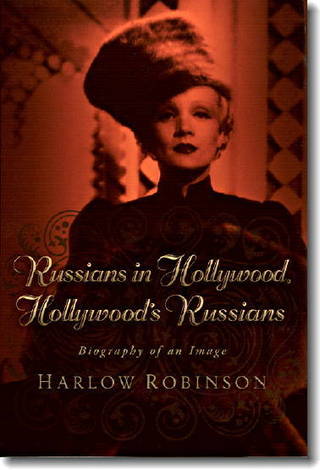Russians in Hollywood, Hollywood's Russians
This book is the first look at the colorful yet largely unknown story of Russian émigrés who worked in the American film industry, and the representation of Russians and Soviets in Hollywood movies. Among the artists who gravitated towards Hollywood in the 1920s and ’30s were the legendary directors Lewis Milestone and Rouben Mamoulian, composers Dmitri Tiomkin and Constantin Bakaleinikoff, and actors Alla Nazimova, Akim Tamiroff, and Maria Ouspenskaya. Many had to overcome obstacles of heavy accents, being cut off from their cultural base, being forced to work beneath their talents, and taking roles that promoted ethnic stereotypes.
As with most Hollywood stories, there are also great artistic and personal triumphs; many relished the opportunity to pursue their crafts largely free of political entanglements. In addition to the story of Russian émigrés, Robinson also discusses the impact of such Soviet artists as Sergei Eisenstein and Sergei Prokofiev and their visits to Hollywood.
The book is also an informed and entertaining analysis of the representation of Russians and Soviets in American cinema. Rarely has a country loomed so large in the American zeitgeist yet remained so unknown. As a result, it was mainly through the medium of film that Americans’ images of and attitudes towards Russia were shaped. From the 1920s to the 1950s these depictions often mimicked the contemporary state of U.S./Soviet relations at that time: the anti-Soviet Ninotchka, establishing the trope of the seduction of a Soviet by Western charm; the WW II films such as Mission to Moscow and Days of Glory which lent a positive spin to the tribulations of our erstwhile ally.
The Cold War brought a slew of Red-baiting genre films (along with notable action and spy films), while the intermittent post-Stalin “thaws” are represented by such classics as David Lean’s Doctor Zhivago and Warren Beatty’s Reds. Russians in Hollywood, Hollywood’s Russians is an original contribution to our knowledge of the early Hollywood film community and a lively blend of film analysis and social and political history.
